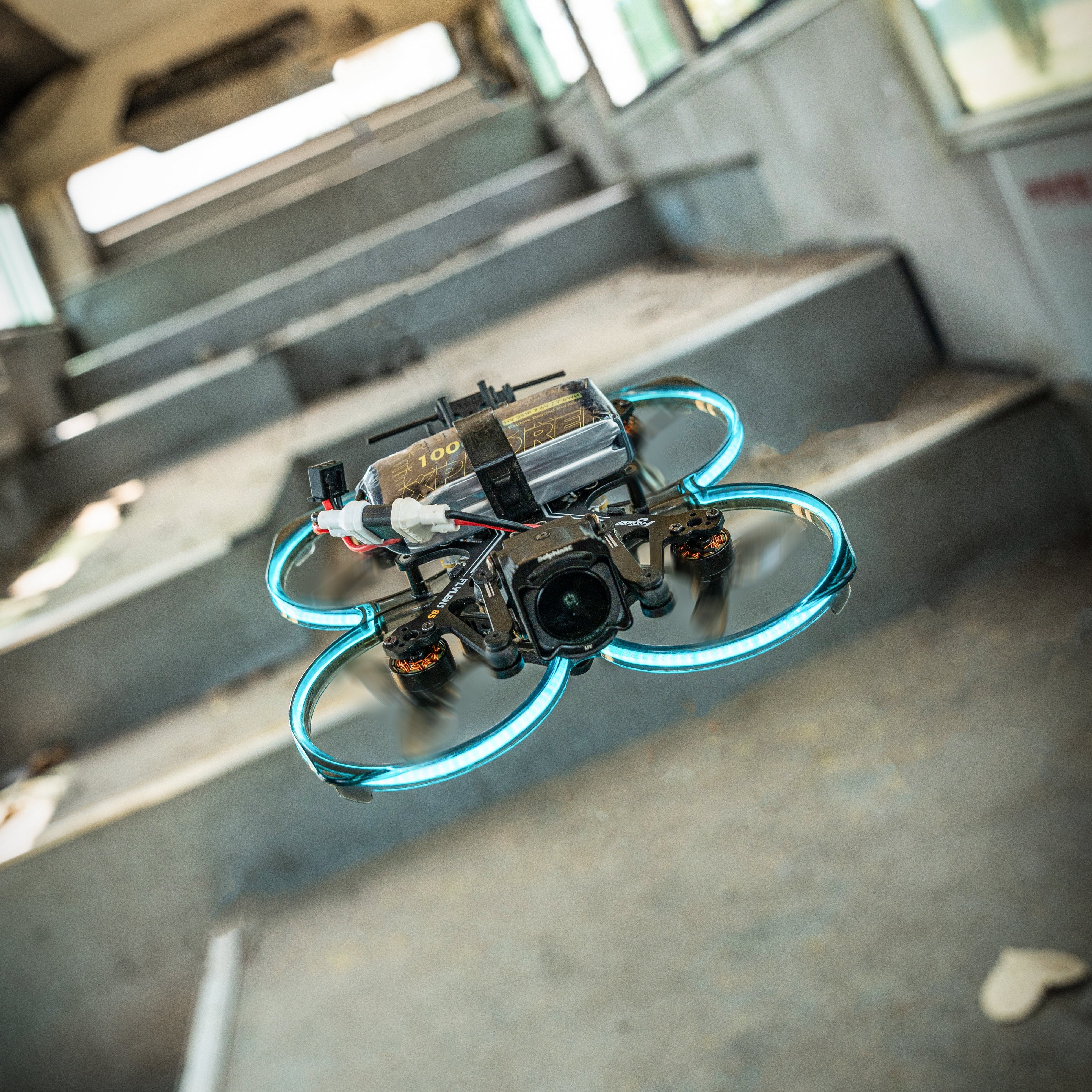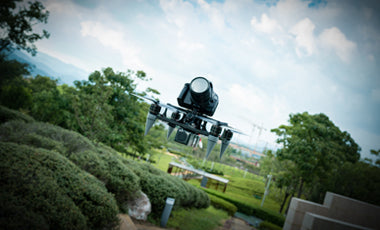AbstractThe power systems of UAVs seen on the market today are mainly piston engine systems and electric power systems, and electric power systems account for the majority of civilian UAVs due to their high energy density, small size, light weight, easy maintenance, etc. This paper provides a more detailed introduction to the power system components of electric UAVs.
【Key words】UAV power system power power supply speed control
At present, the power unit widely used in large, small and light UAVs is a piston engine system. And for cost and ease of use, the electric power system is commonly used in micro UAVs. The electric power system mainly consists of three parts: power supply, power motor and speed regulation system.

1 Power supply
The power supply mainly provides electrical energy for the operation of the power motor. Chemical batteries are usually used as the power source of electric drones, mainly including nickel-hydrogen batteries, nickel-chromium batteries, lithium polymer, lithium-ion power batteries. Among them, the first two types of batteries have been largely replaced by lithium polymer power batteries due to their heavy weight and low energy density. Power battery is different from the ordinary sense of the battery, with high energy density, light weight and other characteristics. For the battery, there are many claims to identify the performance of the battery, and the most critical parameters are the voltage value, energy storage capacity and discharge capacity.
1.1 Voltage value of the battery
The voltage value of the power supply is identified by volts (V). For example, the nominal voltage of the high-voltage version of lithium polymer battery is 3.7V, when fully charged, the voltage can reach 4.35V, and the minimum discharge voltage is 3.5V. The nominal voltage of NiMH battery is 1.2V, when fully charged, the voltage can reach 1.5V, and the minimum discharge voltage is 1.1V.
1.2 Energy storage capacity
The energy storage capacity of power supply is marked by milliamp hours (mAh), which means that the battery can be discharged for 1 hour when discharged at a constant current, such as lithium polymer battery mark (15C, 20000mAh, 14.8V).
1.3 Discharge capacity
The discharge capacity of the power supply is identified by the discharge rate (C), which means the maximum discharge current number that can be achieved according to the storage capacity of the power supply's logo. For example: the power supply logo for 2200MA, 20C, then the power supply maximum continuous current is calculated as follows: capacity X discharge C number = 2.2X20 = 44A. If the power supply more than 44A for a long time to work, will greatly affect the battery life. For our commonly used lithium polymer power battery, fully charged, the voltage of a single cell to 4.15 ~ 4.20 appropriate, the use of a single cell minimum voltage of 3.5V or more, if the need for long-term preservation, a single cell voltage is best for 3.85V, be sure to pay attention to, over discharge and long-term full charge to preserve the battery for the battery has a great deal of damage.
2 Power motor
The power motor used by micro UAV can be divided into two categories: brush motor and brushless motor. Among them, brush motors are gradually no longer used in the field of drones due to their low efficiency. The model of the motor is mainly based on the size. For example, the brushless motor 2814, the logo means that the length of the motor excluding the shaft electronic coil is 14mm and the diameter of the motor stator coil is 28mm. when sometimes there are some logos that do not refer to the size, but to which class it belongs to. There are many technical indicators of power motors, and the two most relevant to the power characteristics of UAVs are speed and power. Motor speed is often identified by kV, which means the increase in motor speed per 1 volt increase. For example, if a motor is marked kV1400, when using a 12.6V battery, the speed can reach 1400 x 12 = 17,640. or 17,640 revolutions per minute.

3 Speed control system
The speed control system of power motor becomes ESC, the whole process is electronic speed controller, ESC for short. for different power motor, it can be divided into brush ESC and brushless ESC. It controls the speed of the power motor according to the PWM signal from the flight controller.
The links of power supply, ESC and power motor are generally as follows:
(1) The power input line of the power supply link ESC;
(2) The control signal line of the flight controller is connected to the signal line of the ESC;
(3) The power output line of ESC is connected to the power motor.
Please note that the ESC is usually equipped with a power output line (BWC), which is usually on the signal line, with a voltage of about 5V, usually used to power the flight controller, RC receiver or rudder.
4 Propeller
The working principle of the propeller is that the propeller blade for high-speed rotation, a large amount of air will be constantly pushed backward, so that the reverse force will be generated on the blade, which is the source of power of the drone. If the propeller is truncated, we see from the section very much like the cross-section of a wing, after rotation, the speed of the propeller relative to the airflow consists of two parts, forward speed + rotation speed. By rotating it will form aerodynamic force on the propeller blade, the component force in the forward direction is what we often call propeller pull. In addition when the propeller rotates, a moment will be formed to prevent the propeller from rotating, we often call it counter-torque, this moment will be balanced by the engine moment. The angle formed by the chord of the propeller profile and the plane of rotation is called the propeller mounting angle. Finally, when the propeller rotates one revolution, the distance of forward propulsion is often referred to as the propeller pitch. In fact, the forward speed of each profile on the propeller is the same, but the circumferential speed is proportional to the distance (radius) of the profile from the rotating shaft, so the angle between the relative airflow of each profile and the rotating plane decreases gradually as the distance from the rotating shaft increases. This is the reason for the twist of each propeller blade. For example, the commonly used 1240 two-blade propeller indicates that the propeller has a diameter of 12" and a pitch of 40.

5 The relationship between the aircraft type and the motor and propeller
The larger the propeller used by the drone, the greater the counter-torsion produced by the propeller to the aircraft, so how to choose a propeller, this will be related to the length of the wingspan of the drone, and the choice of propeller should also pay attention to the parameters of the corresponding motor. For example, if the 1240 propeller, then the wingspan for fixed-wing UAVs should be more than 90CM suitable, otherwise the large torsion, flight instability; another example, with the 6040 propeller suitable for the wingspan on more than 40CM. If the 4530 propeller is used in the wingspan of more than 1 meter drone is it feasible? Of course it can, but the aircraft will fly very power hungry, because the wingspan is large flight resistance, and 4530 propeller produces a small thrust relative to the case, it is like a small horse-drawn car. So in the choice of UAV power system needs to pay attention to the relationship between the power supply, power motor, ESC, propeller these four, must first look at the size of the UAV model, wing and wingspan, and then choose to match the power motor, propeller, power supply, pay special attention to is that absolutely no large size propeller with high KV motor, may burn the motor, affecting battery life, and may even burn the ESC. Even the ESC may be burned off.
6 Other devices
With the development of manned turbojet technology, the development of turbojet engines for unmanned aircraft provides an important technical basis. At present, small turbojet engines have been used in a few high-speed unmanned target aircraft and sudden defense drones. The mechanism of small turbojet engine contains four parts: compressor, combustion chamber, turbine, nozzle. The role of the compressor is to pass the air through the airway at high velocity and eventually reach the combustion chamber. The combustion chamber is mainly used to ignite the fuel introduced for combustion. The expanding air will drive the turbine, which will feed back to control the compressor, and the engine will run in a cycle. The accelerated high temperature gas from the nozzle will eventually be used as the thrust of the whole aircraft. In addition to the above power systems, there are a few applications of turboshaft, turboprop, turbofan and other power units in UAVs.





Leave a comment